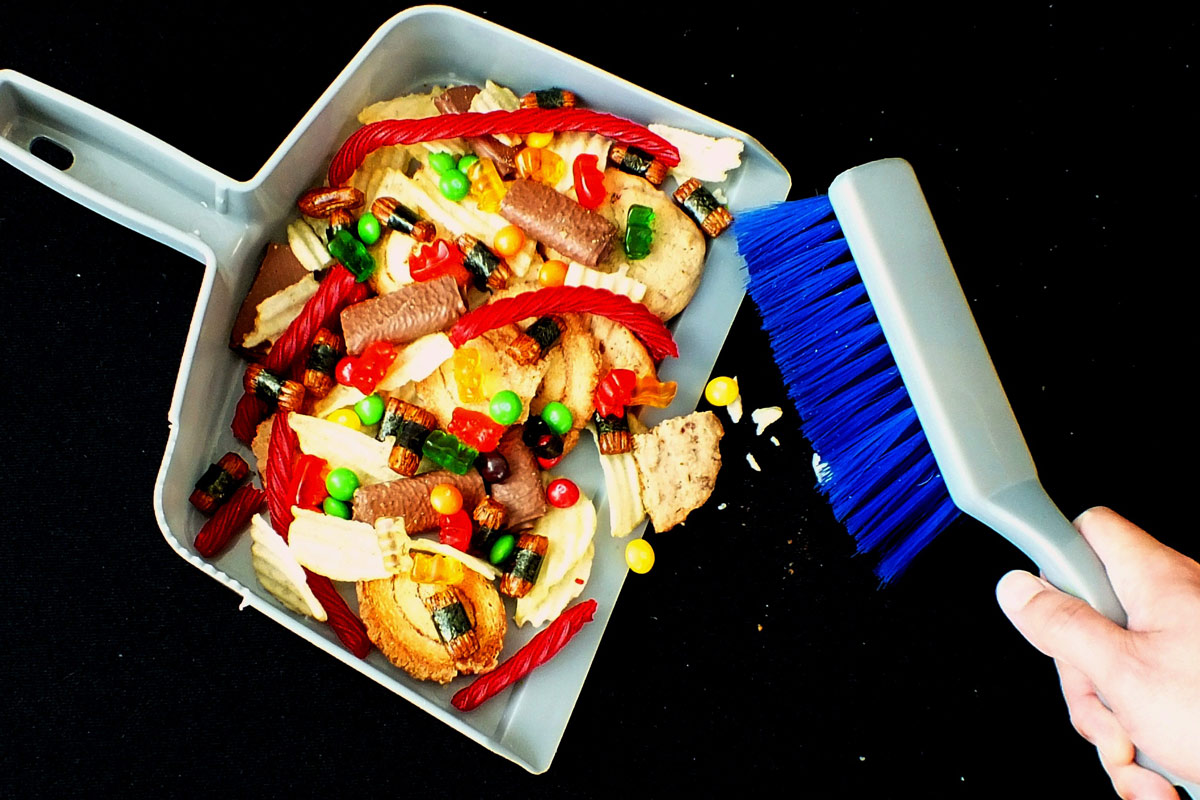
Simple Strategies for Cleaning Up Your Diet
The philosophy behind clean eating is simple: eat foods as close to the source as possible, consuming them in their most natural forms.
For some, clean eating isn't second nature. The idea of giving up certain "comfort foods" can be intimidating, and the thought of buying all-organic products or having to cook every meal from scratch seems like a drain on money and time.
But if you know how to do it right, clean eating can be incredibly easy. Here are some rules of thumb to get you going in the right direction:
- Eat food. This sounds simple, but in today’s supermarkets this can be easier said than done.
"Avoid eating anything your great-grandmother wouldn’t recognize and that won’t rot eventually," says Nicole Sievers, a registered dietitian for Wilcox Medical Center. The exception to this rule, Sievers says, is honey, which can stay fresh for years without going bad.
"Let culture be your guide here, not science," she advises, noting that there are many "food-like" items out there today that your ancestors wouldn't recognize.
Twinkies? Go-Gurt? Hot Pockets? "Stay away from these imposters," she advises.
- Read labels. Even products that seem virtuous or tout nutritious claims can contain unhealthy ingredients. Most often, companies pay for many of these claims, and the foods that carry them are likely to be heavily processed.
Take a moment to read the ingredients list and avoid products containing ingredients that are unfamiliar, unpronounceable or contain high fructose corn syrup. These characteristics may not be harmful in and of themselves, but they are pretty accurate indicators that the food has been heavily processed. - Cut down on processed foods. This doesn't necessarily mean eliminating all processed foods – some items, like pre-cut veggies or bagged frozen spinach, are minimally processed for convenience and retain much of their original nutrition content.
What you do want to get rid of are foods loaded with chemicals, preservatives, dyes, added sugars and oils, and GMOs. These most often include convenience foods like those found at fast-food chains, convenience stores and in inner aisles of the supermarket.
"Don't get your food where you get your gas!" Sievers stresses. "When foods are heavily processed, they are stripped of their naturally occurring flavors and colors and lose a good amount of their disease-fighting vitamins, minerals and antioxidants. What do you think is put back in their place? Artificial chemicals, dyes, preservatives and loads of salt, sugar and hydrogenated oils that contribute to chronic disease.”
Hint: Shop the outside perimeter of the grocery store for the freshest foods. - Adopt a plant-based diet. You don’t have to become a vegan and join PETA. A plant-based diet is composed primarily of vegetables, fruits, whole grains, nuts and seeds, but it also includes reasonable amounts of lean meats, dairy and eggs.
"Studies show that vegetarians are healthier than carnivores, but 'near-vegetarians,' or those who eat a plant-based diet, are as healthy as vegetarians," notes Sievers, who suggests that when purchasing meat, opt for wild-caught fish and meats that have been pasture raised, grass fed and are free of hormones and antibiotics, if possible.
Purchase local, fresh meats and seafood as much as possible, but let colorful, fresh fruits and vegetables take center stage. Prepare them in simple but flavorful ways, such as grilling, steaming or stir-frying using citrus, fresh herbs, spices and aromatics (garlic, shallots, ginger).
Whether certified organic or not, choosing food grown or raised with care on good soils may contribute to your health by reducing exposure to pesticides.
Or grow your own fruits and vegetables in a home garden.
"My father grows kale, green onions, chives, lemons, oranges, lettuce and tomatoes, so we utilize a lot of these ingredients in the food we prepare," says Rebecca Izawa, registered dietitian and board-certified specialist for pediatric nutrition at Kapiolani Medical Center for Women & Children. "By growing our own foods, we can feel good about what is going into our bodies."
- Choose whole grains. Harvard researchers recommend devoting a quarter of your plate at any meal to whole or sprouted grains like brown rice, whole-wheat pasta and whole-grain pilaf. That’s because studies have shown a diet rich in whole grains reduces the risk of cardiovascular disease, type 2 diabetes and colorectal cancer.
However, watch out for words like "multigrain," "100% wheat" and "stone ground," which are misleading and don't necessarily mean the food contains whole grains.
Choose products with a whole grain listed as the first ingredient and make sure that the word "whole" comes before any grain (e.g., whole wheat, whole oats).
- Plan ahead. Browse magazines and websites, or download an app to help find new and interesting recipe ideas. Plan to try a new recipe every week, or choose one of your tried-and-true dishes and give it a healthy makeover.
Make a list before going food shopping so that you'll know exactly what you need – and won't be tempted to buy anything you don't. If weeknights are busy, devote a few hours on the weekend to prepare big batches of food that can be portioned out for the week ahead.
"Planning meals is important," Izawa says. "If you think ahead, you can plan out healthy and nutritious food."
Published on: January 2, 2015




